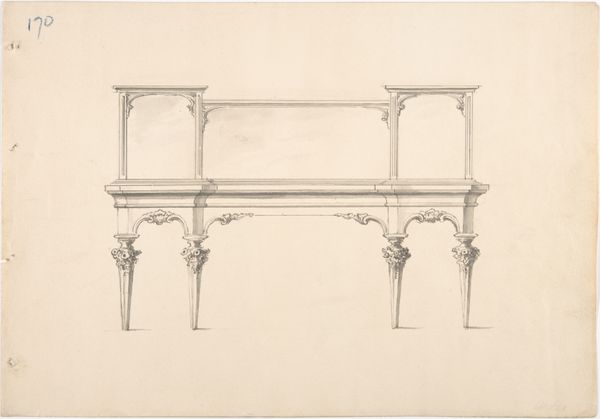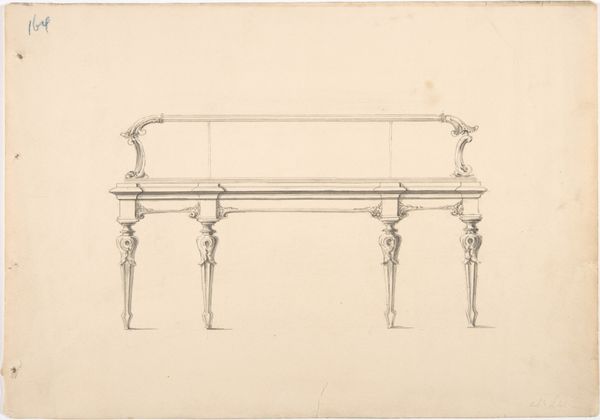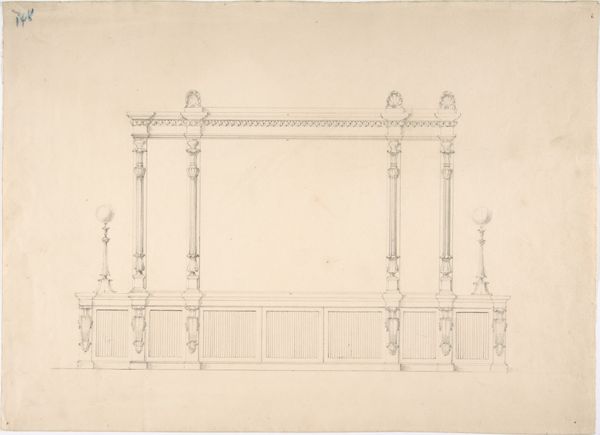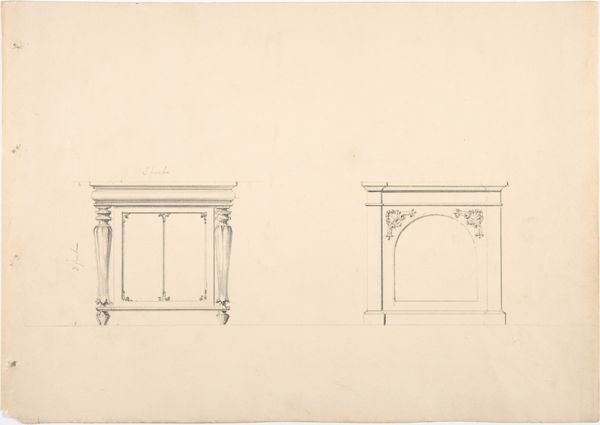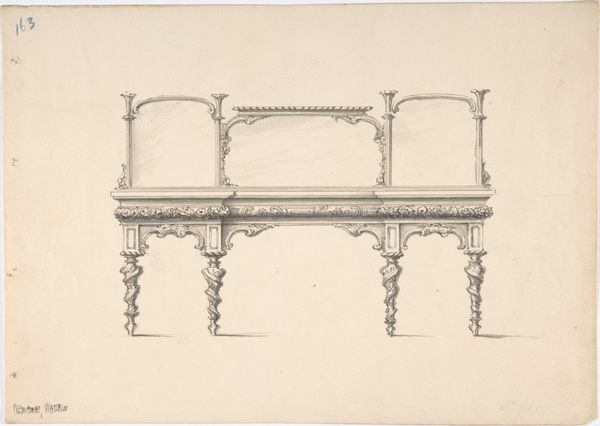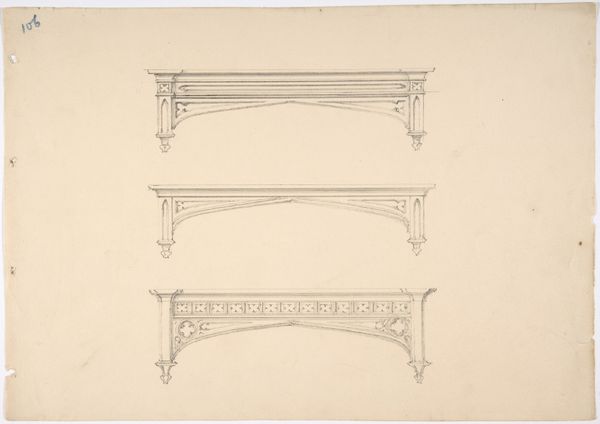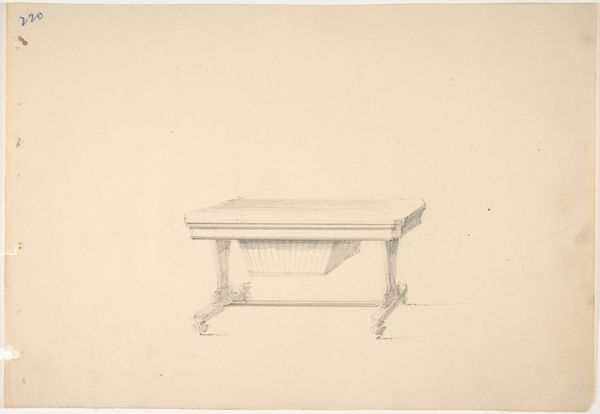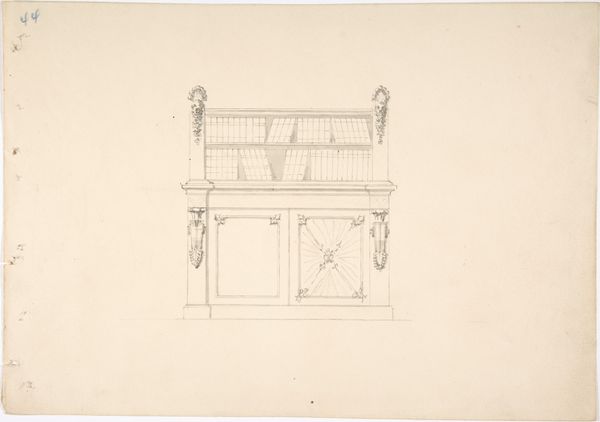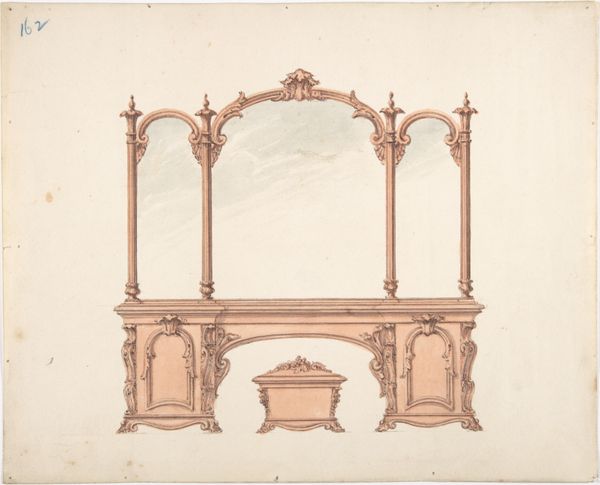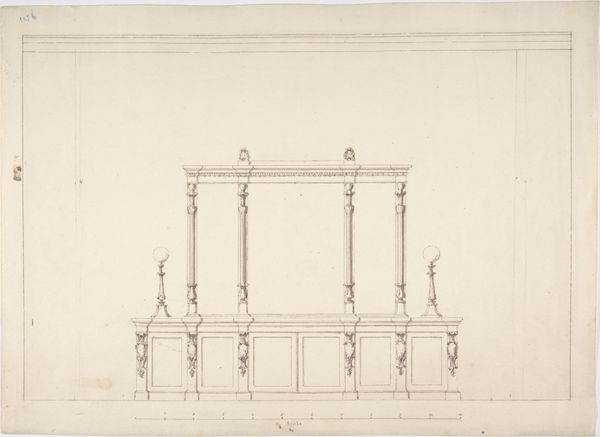
Design for a Mirrored Sideboard with Diminishing Columnar Legs and Classical Ornament 1800 - 1850
0:00
0:00
drawing, print, pencil
#
drawing
#
neoclacissism
# print
#
furniture
#
pencil
Dimensions: sheet: 8 9/16 x 12 1/4 in. (21.7 x 31.1 cm)
Copyright: Public Domain
Curator: This design, dating from around 1800 to 1850, presents a concept for a mirrored sideboard adorned with diminishing columnar legs and classical ornamentation. Editor: Immediately, I'm struck by its elegance and delicate, almost ethereal quality, rendered purely through line work. Curator: Indeed. The anonymous designer masterfully employs pencil on what appears to be print paper, showcasing a command of line and form characteristic of the Neoclassical style. Editor: Beyond its structural aspects, the columnar legs tapering downwards evoke a sense of ascension or lightness, perhaps symbolizing elevated status. What about the significance of a mirrored sideboard? Curator: Mirrors, during that period, were increasingly associated with self-reflection and the projection of status, which aligned perfectly with Neoclassicism’s aspiration for harmony and order. But, observe closely how the ornament does more than merely decorate, wouldn't you agree? Editor: Agreed. The classical motifs – the acanthus leaves, the geometric fretwork – those aren't just embellishments, they actively draw on antiquity to legitimize this idea. In a domestic setting, what meanings would classical forms add to the user's space and social interaction? Curator: These images communicate, aspire, reflect. They subtly reinforced ideals of rational order and taste of that society. Ultimately, how can such designs provide keys for accessing the domestic social stage? Editor: In essence, beyond mere furniture, this design becomes a subtle symbol, reflecting aspirations and values. I’m really left appreciating how much history is contained within simple sketches of Neoclassical design.
Comments
No comments
Be the first to comment and join the conversation on the ultimate creative platform.
